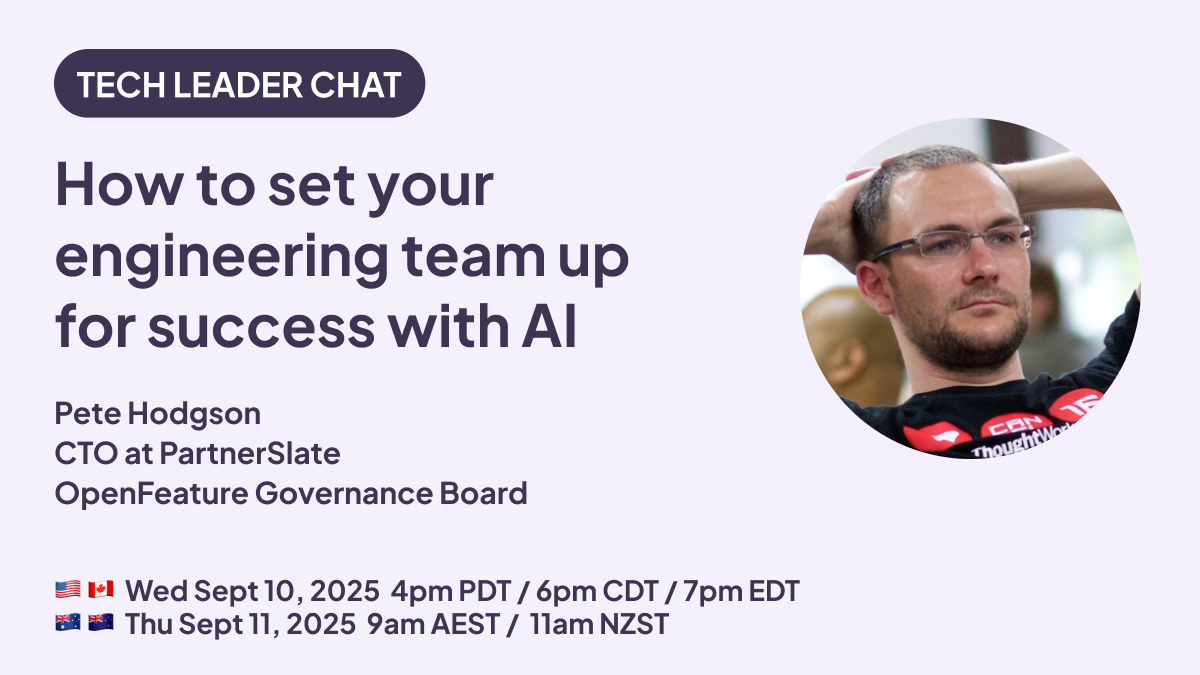
Engineering teams are under pressure to use AI in their development workflows. This pressure comes from a variety of sources – from executives and boards, competitors who seem to be moving faster with AI, vested interests from AI vendors, and industry hype saying you’ll be behind the curve if your team isn’t using the latest AI tech now. At the same time, some of your engineers might still be skeptical about the value of AI, worried about losing their jobs, or concerned about the ethical implications. Caught between the pressures from above and below, how can an engineering leader navigate this to set their team up for success?
In this Tech Leader Chat, PartnerSlate’s CTO Pete Hodgson (previously at Earnest Inc., ThoughtWorks and more) discussed the reality of AI adoption across companies and how to roll AI out for your team while setting everyone up for success.
The session explored how to roll out new AI-assisted engineering practices, and how to work with leadership to create the space needed to properly implement AI tooling.
Our key takeaways from Pete's talk are as follows:
AI adoption is happening in a "chaotic domain" where the technology is unintuitive, rapidly changing, and full of noise. Rather than jumping straight to measuring productivity gains, organizations should first establish a culture of experimentation. Set goals like "every team tries 10 AI experiments this quarter" and focus on getting teams comfortable with the technology before worrying about ROI metrics. This approach recognizes that the relationship between AI usage and outcomes is still poorly understood, making traditional planning-then-executing strategies ineffective. The key is creating a feedback loop where teams try things, learn what works, and share those insights across the organization.
AI adoption follows similar patterns to past technology transformations like DevOps or agile - use "aligned autonomy" with clear goals, metrics, and team empowerment. However, AI requires more intensive support through training (since it's so unintuitive) and communities of practice (for sharing what works). The fundamentals remain the same, but you need stronger organizational support structures. Training becomes particularly valuable because many engineers still lack foundational knowledge about how LLMs work, context management, and the full landscape of available tools beyond basic autocomplete. Communities of practice need active top-down support to prevent them from fizzling out, as they're crucial for sharing what actually works in your specific organizational context.
Instead of trying to prevent AI use, implement stronger quality gates - better testing, linting, code review processes, and clear accountability standards. Make engineers responsible for understanding and vouching for any code they submit, whether AI-generated or not. The solution isn't restricting the technology but building systems that catch problems regardless of how code is produced. This means treating your codebase as if you're constantly onboarding junior engineers - with robust documentation and enforcement of coding standards. The goal is creating systems where bad code gets caught automatically, whether it comes from a rushed human or an overeager AI agent.
View the slides from the talk and the full talk transcript.
Enjoyed watching Pete's talk? Be sure to join our community for future talk updates.
